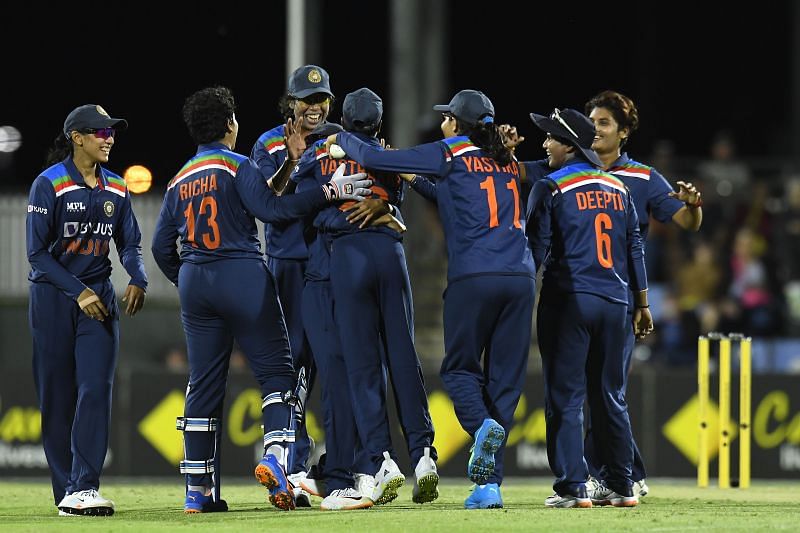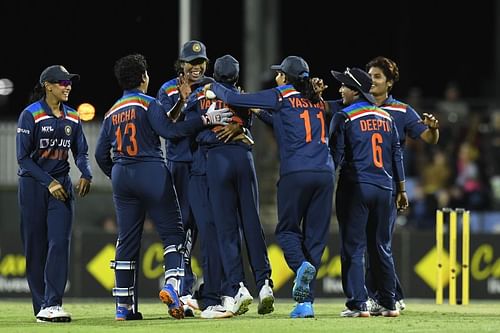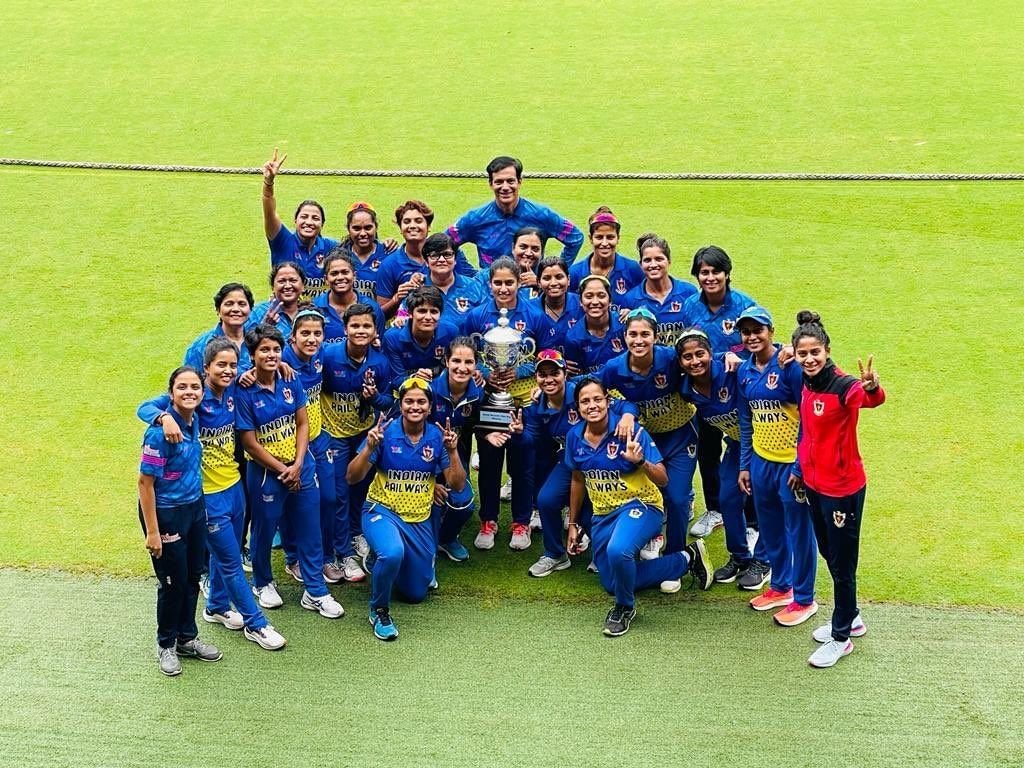
Pandemic or not - Women’s cricket always seems to suffer more

A week ago, after much doubt about whether it would take place, the BCCI confirmed that the Ranji Trophy would happen this year. And rightfully so. With the Covid-19 pandemic still threatening to return India to the chaotic ways of the second wave, the country’s premier red-ball tournament seemed very much in doubt.
Had the Ranji Trophy been cancelled again, it would have meant two consecutive years without red-ball cricket for the male domestic cricketers of the country. India’s supply line would well and truly have been stalled at a time when the World #1 Test team is staring right into the start of a new era, a changing of the guard in many ways - whatever you want to call it.
Pressure, from both the media and the fans, has ensured the return of the four-day game to Indian cricket, after a year in exile. But what about the women’s game? What about the cricket that the country’s female players are missing out on?
Right from the onset of the pandemic, the women’s game has seemingly faced more disruptions than the men’s game has. The Indian national women’s team played no cricket for a whole year after the 2020 T20 World Cup. They have played 11 ODIs, 9 T20Is and 2 Tests since.
The Mithali Raj-led side will play New Zealand in 5 ODIs, taking that total to 16 ODIs in the year before the World Cup. To put that in perspective, the men played 27 ODIs in the lead-up to the 2019 World Cup, apart from several games in the other formats.
Women’s cricket and its lost momentum

However, the Women in Blue are not the worst-affected in Indian women’s cricket either. While we did see Railways defend their Women’s Senior One Day Trophy earlier this season, the Women’s Senior T20 trophy has not happened since November 2019 (as part of the 2019-20 season). Although some stakeholders seem confident of playing the tournament this year, there has been no official communication from the BCCI.
And while we’ve seen the 4-team Senior Women’s One Day Challenger Trophy take place already, the state teams have suffered with no matches other than the two one-day tournaments (once in 2020/21 and once in 2021/22).
Karnataka Women’s head coach Mamatha Maben spoke to Sportskeeda about how the prolonged breaks had impacted the team’s preparation. She said:
“The general flow of the game has been affected. If you see from Karnataka’s perspective, we did very well in Una (in Himachal Pradesh during the 2019/20 season) and that is when the pandemic hit. But I had seen a lot of positives. That was the first time I was seeing positives across the scene. And I was very keen to use the off-season to work on those areas, right. But that didn’t happen.”
“We had identified some areas and through Zoom calls and things like that, we were keeping in touch with players. Individually at least, there was work being done. Eventually this season, the fruits were there for everybody to see. But again, now everything got disrupted. Though we’ve had games despite the pandemic, as a state team we have done well. But the flow, you know. In these two years, we could have gone to another level had we had a normal season.”
And just like Karnataka, the other state sides find themselves struggling to maintain the momentum of their preparation going forward. That said, a break in the flow of the team’s preparations isn't the only concern facing the game and its players at the domestic level.
Are finances a stumbling block for female cricketers in India?
Although the cancellation of the Ranji Trophy could have cost their male counterparts a massive chunk of their earnings, India’s women cricketers stand to lose a big part of their income if the Women’s Senior T20 Trophy doesn’t happen again this year.
And while the outcry from journalists aplenty did seem to result in the BCCI restoring this season of the Ranji Trophy, the voices have, unfortunately, been few and far between for the women’s game. A closer look at the financial situation of the female cricketers will paint the perfect picture of why the tournament (and any other they can play) needs to happen.
While the BCCI’s pay hike from September 2020 means they are getting more than INR 12,500, the INR 20,000 per match played that is set to hit their bank accounts is not likely to be anywhere near life-changing. On average, a player that played all group stage games of the One-Day trophy would receive INR 1 lakh from the tournament. And that fee would go up to INR 1.6 lakh for a player that made it all the way to the final.
If the T20 tournament doesn’t take place this season, that is INR 1-1.6 lakh on average for a player that is only playing for their state side. To put things in perspective, the men earn between INR 40,000-60,000 per match day. They are likely to make more money in one Ranji Trophy match than the women have made from the entire one-day tournament, and possibly the entirety of this season.
Financially, the BCCI faces no roadblocks when it comes to hosting the tournament. But from a logistical standpoint, it may not be a bed of roses. That said, it is down to the board to take care of their players and ensure that these women can chase their dreams rather than losing out to their financial hurdles.
An average male cricketer that played every game in the group stages of both the Vijay Hazare and Syed Mushtaq Ali trophies would have made anywhere from INR 4 lakh to INR 6 lakh this year. That adds up to twice as much as the average female cricketer would have made in a season that was not ravaged by a pandemic.
A female cricketer plying her trade in the domestic game summed up the problem in an exclusive chat with Sportskeeda:
Look at the men. Whatever the situation, they will be having matches. The difference arises because men get more opportunities than women. They have back-to-back matches for months together. For women, we have no other matches apart from the T20 and one-day tournaments.
I don’t know why there’s so much difference between men’s and women’s pay either. We play cricket at the same level as the men (for the state). If not our generation, at least the future generations of female cricketers shouldn’t think we’re not being paid enough. They need to treat us as equals.
While the intention here is not to compare what the men and women make playing cricket in India, it is important to note just how difficult it is to be a woman playing the game in the country. The likes of Mithali Raj, Jhulan Goswami and those who came before and after them have achieved what they have in spite of the system and not because of it.
There’s no denying that the pandemic has had a negative impact on the game across the board, and it is a problem the BCCI, like other sporting boards across the world, have looked to actively solve for the past couple of years. The issue lies with the fact that the men have seemed to have first access to the solution every time in Indian cricket.
Stephen Hawking once said, “While there’s life, there is hope.” Women’s cricket in India is very much alive and kicking. For as long as that is the case, the various stakeholders can only hope that things improve hereon.